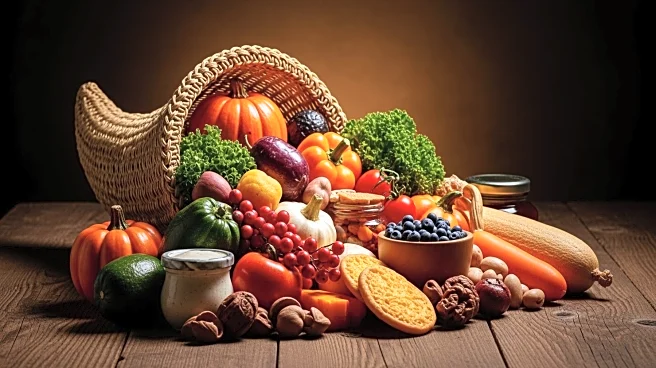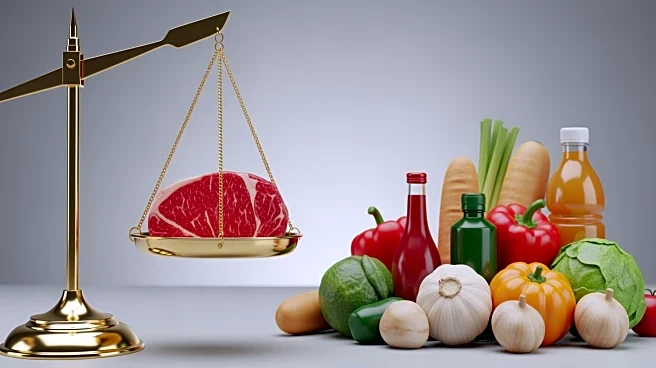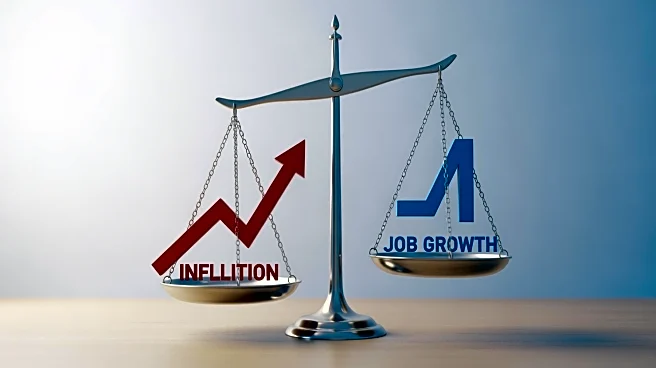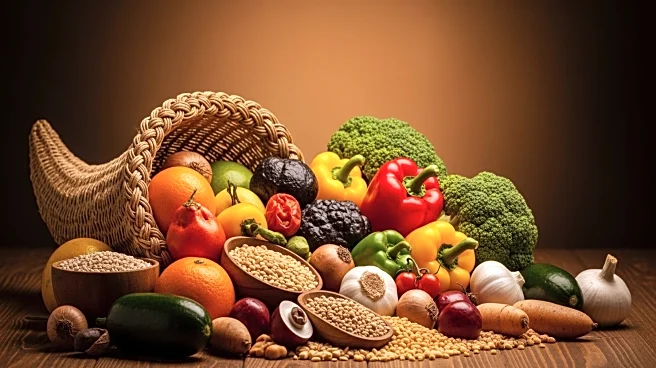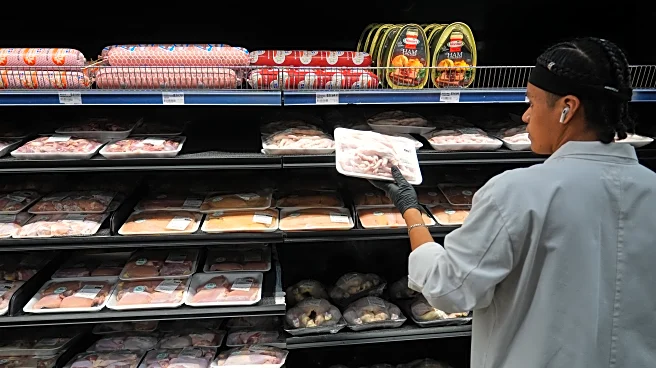What's Happening?
President Trump has repeatedly stated that beef is the only grocery item experiencing a price increase during his second term. In various speeches and interviews, he claimed that grocery prices are generally
decreasing, except for beef, which he promised to address. However, data from the Consumer Price Index contradicts these claims, showing that grocery prices have risen by 1.4% since January, when Trump returned to office, and by 2.7% compared to September 2024 under former President Joe Biden. The increase from July to August 2025 was the largest in three years, followed by another rise from August to September. Prices have increased across various grocery categories, including meats, poultry, fish, eggs, nonalcoholic beverages, cereals, bakery products, fruits, and vegetables.
Why It's Important?
The discrepancy between President Trump's statements and actual grocery price data is significant as it impacts public perception and policy discussions. Rising grocery prices affect American households, particularly those with fixed or low incomes. Experts attribute the price increases to Trump's policies, including tariffs on imported goods and a crackdown on undocumented immigrants, who constitute a large portion of the farm workforce. These factors contribute to higher costs for food production and importation, affecting consumer prices. Understanding the true state of grocery prices is crucial for policymakers and consumers to make informed decisions.
What's Next?
The ongoing impact of tariffs and immigration policies on grocery prices may lead to further scrutiny and debate among policymakers and economists. Stakeholders, including consumer advocacy groups and industry representatives, may push for policy adjustments to mitigate rising costs. Additionally, President Trump may face pressure to address the broader range of grocery price increases beyond beef, potentially leading to policy shifts or new initiatives aimed at stabilizing food prices.
Beyond the Headlines
The broader implications of rising grocery prices include potential shifts in consumer behavior, such as increased demand for locally produced goods or alternative food sources. The situation also highlights the interconnectedness of global trade policies and domestic economic conditions, emphasizing the need for comprehensive strategies that consider both international and local factors. Long-term, these dynamics could influence agricultural practices, labor markets, and trade negotiations.



